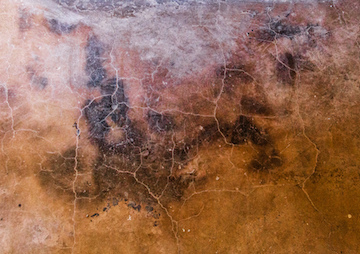Declassified CIA Report Shows Barbaric Conditions That Led to a Detainee’s Death
Gul Rahman, a 34-four-year-old suspected al-Qaida operative, froze to death in November 2002 after being beaten, doused with cold water and left half-naked while chained to the floor of his cell. Ken Piorkowski / CC BY-ND 2.0
Ken Piorkowski / CC BY-ND 2.0
A Freedom of Information Act lawsuit by Vice News yielded a closely guarded document detailing the brutal conditions in which 34-year-old Afghan militant and suspected al-Qaida operative Gul Rahman froze to death in November 2002 after being beaten, doused with cold water and left half-naked while chained to the floor of his cell.
“The release of the reports on Rahman’s death is hugely significant,” writes Vice reporter Jason Leopold. “The ACLU is suing the architects of the torture program on behalf of Rahman’s family, alleging human experimentation and torture. One of the two architects, retired Air Force psychologist Dr. Bruce Jessen, was present at COBALT [the code name of a black site in Afghanistan] prior to Rahman’s death and performed a psychological evaluation on Rahman, deciding what torture techniques should be used on him ‘to render him compliant.’ ”
“The new details are sickening,” said Dror Ladin, an ACLU attorney who represents Rahman’s family and two other torture victims suing Jessen and his former partner, Dr. James Mitchell, cited in Leopold’s report. “The CIA and Jessen considered Gul Rahman to have a ‘sophisticated level of resistance training’ because he ‘complained about poor treatment’ and said he couldn’t ‘think due to conditions (cold). …’ When they decided he wasn’t sufficiently ‘broken,’ CIA personnel brutalized, starved, and froze him to death, then lied about it.”
Of the details of Rahman’s death, Leopold reports:
On November 19, 2002, at about 3pm, guards brought food to Rahman’s cell. The last meal he’d eaten had been the day before. When the guards entered the cell, he was nude from the waist down. The captive threatened to kill the guards and proceeded to throw his food, water bottle, and waste bucket at them.
The guards, acting on BOP recommendations, shackled Rahman to the wall “in a short chain position, which prevents prisoners from standing upright.” Rahman was chained to a “metal grill located low on the wall of his cell” on orders from the CIA officer who managed the black site.
The next morning, at about 10am, Rahman was seen lying on his side. The guards tried to rouse Rahman by banging on his cell door with their nightsticks, but he didn’t move. The guards then “notified several CIA officers who were present at the facility in conjunction with the interrogation of another prisoner.”
When the officers entered Rahman’s cell, they saw “a small amount of blood coming from his nose and mouth.” A CIA officer checked Rahman’s pulse, but there was none. They unsuccessfully tried to resuscitate the detainee before he was pronounced dead.
Rahman, according to an autopsy performed by a CIA pathologist, likely died of hypothermia, a “diagnosis of exclusion.” On the night Rahman died, the outside temperature was 31 degrees Fahrenheit. The black site was not insulated.
Remarkably, the CIA’s Associate Deputy Director for Operations/Counterintelligence concluded that Rahman’s “actions likely caused his own death.”
“By throwing his last meal he was unable to provide his body with a source of fuel to keep him warm,” the report said. “Additionally, his violent behavior resulted in his restraint which prevented him from generating body heat by moving around and brought him in direct contact with the concrete floor leading to a loss of bodyheat through conduction.”
But the IG reached different conclusions and referred Rahman’s case to the Department of Justice, which declined to prosecute.
—Posted by Alexander Reed Kelly.
Your support matters…Independent journalism is under threat and overshadowed by heavily funded mainstream media.
You can help level the playing field. Become a member.
Your tax-deductible contribution keeps us digging beneath the headlines to give you thought-provoking, investigative reporting and analysis that unearths what's really happening- without compromise.
Give today to support our courageous, independent journalists.






You need to be a supporter to comment.
There are currently no responses to this article.
Be the first to respond.